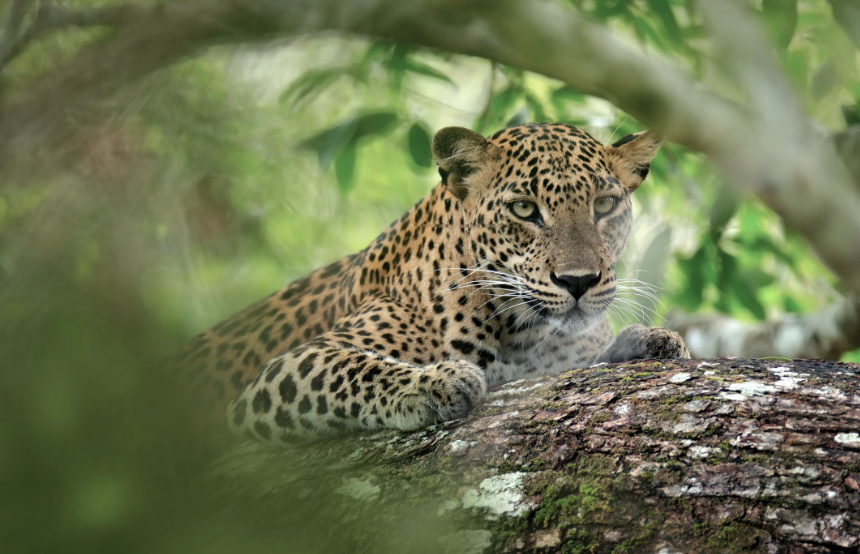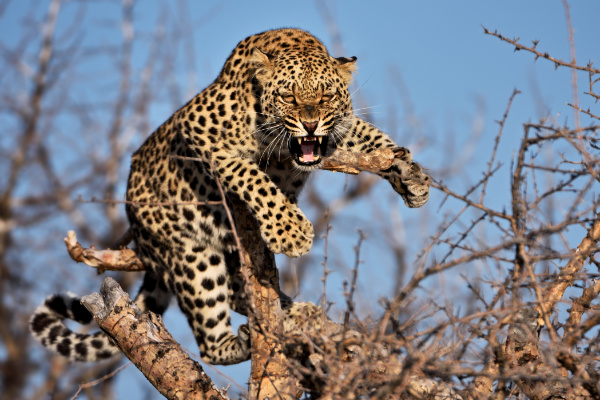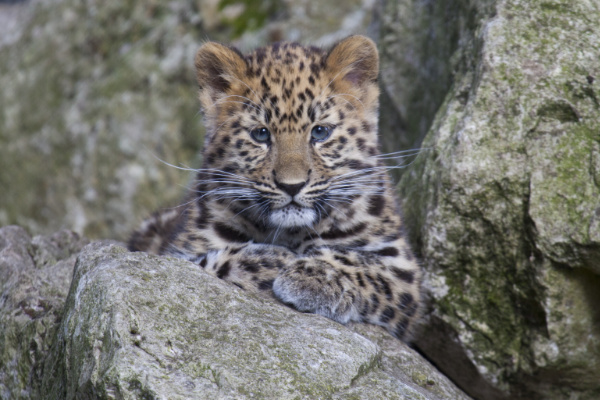
Published 8th Mar. 2024
Reading time
Fast, fearless and fur-ocious, the majestic leopard is nature’s answer to an efficient and elegant predator. Despite being the smallest member of the big cat family, leopards pack a punch with their guttural roars and fierce appetites. With nine subspecies spread across various regions of Africa and Asia, they also play an integral role in maintaining healthy ecosystems. Interested in learning more about this spotty species? Read on to discover our top five leopard facts.
While cats and trees typically conjure up images of firemen and ladders, leopards aren’t the kind of cats that need our help. These big cats are built for climbing; with their powerful back legs, sharp claws, low centre of gravity and compact body size, leopards can climb to knee-wobbling heights (and get back down again). Their motivation for mastering the branches? To keep their tasty kills safe. Down on the ground, a leopard’s mealtime can be ruined by scavengers – such as hyenas – snatching what they caught. But up in the branches, leopards enjoy their precious prey in peace.

Speaking of a leopard’s tree top eating habits, their dietary preferences are equally impressive. You wouldn’t want to get in their way, because they’ll take down anything meaty that steps in their path: birds, monkeys, snakes, lizards, deer, gazelles and antelope to name just some of the unlucky few. Because of a leopard's tendency to never turn down a meal, they’ve survived in areas where other (fussier) big cats have diminished.
A group of leopards aren’t known as a ‘leap’ for no reason. Despite being solitary animals, sticking to groups of just a mother and her cubs, they earn their name from their incredible ability to leap forward 20ft and upwards ten feet. Just like their tree-climbing motivation, leopards leap because of their bellies. Their built-in springboard helps them catch prey such as birds, or to help them stealthily pounce in an ambush.
If you find yourself on a safari and hear a chainsaw starting up, grab your cameras and look out for a leopard, because their signature way to communicate is through a deep, guttural call dubbed ‘the saw’. Both males and females vocalise this way as a mating call, a territorial call or to threaten other leopards to stay away. If they end up fist to fist (or paw to paw) with each other, they’ll hiss, spit, growl and snarl. But communication-based leopard facts aren’t all scary – these spotty cats often purr and meow at their cubs, just like our domesticated friends.
Our final leopard fact focuses on a specific subspecies. With less than 200 left in the wild, the Amur leopard holds the title of being the rarest big cat on the planet. These majestic creatures, inhabiting the forests of the Russian Far East and northeastern China, face several threats: they’re poached for their beautiful spotted fur; their habitats are being destroyed due to forest fires and farming; and their prey numbers are declining. Although critically endangered, conservation work is slowly helping to increase their numbers so we don’t lose this subspecies forever. If you're keen to catch sight of these big cats, then our safari specialist, Jamie, suggests heading to where they thrive - South Africa's Sabi Sands Private Game Reserve and Timbavati Private Game Reserve. They both enjoy open borders with the world-famous Kruger National Park, and with their shrub-lined riverbeds, they're the perfect places for leopards to ambush prey.

Written by Evie Buller.
Practical advice and inspiration for your next trip

When you think of cherry blossom, we’d bet you picture Japan and its springtime Sakura. Now, we’re not denying that Sakura season is beautiful, but its reputation means it draws flocks of visitors, contributing to overtourism and disrupting local life. To combat this, we’re on a mission to shout about South Korea’s cherry blossom. Known locally as beotkkot, South Korea’s cherry trees bloom at a similar time to Japan’s and are just as breathtaking – without the pesky crowds (and skyrocketing costs).
20th October 2025 - South Korea The Natural World

Since the beginning of time, humans have been drawn to lakes, whether it’s to appreciate their beauty or see first-hand the places where monsters such as Nessie (Scotland) and Ogopogo (Canada) are said to reside. Fortunately, we’re spoilt for choice, from Lake Como’s bluer-than-blue waters to Moraine Lake’s magnificent mountainous backdrop. Fancy a trip to one of the world’s best bodies of water? Read on for our shortlist of the most beautiful lakes in the world… Lake Como,
9th May 2025 - The Natural World

Is it always possible to see the Southern Lights? No. Is it worth trying? Without a shadow of a doubt. The Southern Lights (aurora australis) are notoriously more difficult to see than their northern counterparts, but that only makes the swirling rivers of greenish blue even more spectacular when you do catch a glimpse of them. The best time to see the aurora australis is during the Southern Hemisphere’s darker, cooler months – from March to September – when the skies are clearest and the nights are longest.
14th March 2025 - The Natural World

Our team of destination experts will get to know you and your unique requirements for your holiday

We work with you to build an ultra-personalised holiday itinerary with your choice of accommodation, experiences and activities

All of our holidays include little extras designed to make a big difference to your trip, from fast-tracking you through airport check-in and security to our network of local Concierges